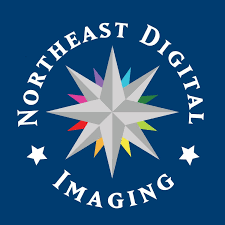
Mount Hope Cemetery (355 Walk Hill St., Mattapan, MA)
Chinese Immigrant Memorial Project
Directions to the Chinese Immigrant Memorial

Project Summary – March 2008
The Chinese Historical Society of New England (CHSNE), on behalf of Boston’s Chinese American community, has been spearheading a project to restore the historic Chinese burial grounds at Boston’s Mount Hope Cemetery. The project consists of three parts: (1) building a new memorial altar, (2) creating landscape improvements, and (3) implementing a program to restore and replace the crumbling tombstones and identify those who are buried there. More than 1,500 Chinese immigrants have found their resting place at Mount Hope since 1930, including the original immigrants from China who settled in the Boston area.
The Chinese people have always revered their elders and their ancestors. Maintaining a well cared-for burial ground is a primary means by which the Chinese pay respect to their ancestors and predecessors. Ancient rituals include visiting burial sites several times a year, including on special seasonal holidays to honor the dead (such as the springtime Ching Ming Festival), when the Chinese clean the graves, burn incense, and make offerings of “money,” “gold” and food. These rituals are usually performed at individual gravesites or at a shrine or altar located at the burial grounds.
Over the years, the Chinese burial grounds at Mount Hope Cemetery, in particular the three oldest sections, fell into disrepair. Due to the harshness of the New England weather and occasional vandalism, many of the tombstones have eroded or have been broken and displaced. Bricks from the old altar broke off. To the Chinese, any disrepair or deterioration of an ancestor’s gravesite is considered to be highly disrespectful and dishonorable, and many Chinese believe that the way an ancestor is treated by his or her descendants is an indication of how the descendants’ lives will be.
Motivated by the sad state of the burial grounds, in 1989, a group from the Chinatown community led by Davis Woo and David S.Y. Wong first set forth to clean up and beautify these Chinese burial grounds. Their efforts became the genesis of the CHSNE, founded in 1992 with the goal to take this project to the public realm. Over the years, Davis Woo, David S.Y. Wong and the CHSNE have undertaken ongoing efforts to improve the burial grounds, including working with the Boston Parks and Recreation Department (BP&RD) to clean up the grounds, remove litter, keep the lawn mowed, and to reset misplaced tombstones to their foundations. And with the help of UMass/Boston students and members of the Coalition of Asian Pacific American Youth (CAPAY), tombstones are been cleaned, photographed, and are being indexed.

In 1998, CHSNE board members Bik-Fung Ng and Deborah Dong created the Mount Hope Cemetery Chinese Immigrant Memorial Committee to aggressively raise funds, apply for grants, and engage professional architects and contractors for the design and construction of a new Memorial. As a result of their efforts, CHSNE was awarded grants of $120,000 by the City of Boston’s Edward Ingersoll Browne Fund for the design and construction of the Memorial. Twinspine Architects of Somerville was engaged to create the Memorial’s design, which was unveiled to the public in September 2000 at CHSNE’s Annual Meeting and Dinner. Other major grants followed from the Chinatown Trust Fund, CI Associations, LLC (a partner in the One Lincoln Street building), and the Boston Parks and Recreations Department.
In 2006, Ng Brothers Construction, Inc. began construction of the Memorial. After nearly 18 years of effort, the new Chinese Immigrant Memorial was dedicated at Mount Hope Cemetery in March 2007.
As part of continuing efforts to improve the area, the BP&RD plans to landscape the Chinese burial grounds with while lilies and dogwood trees. Efforts are currently underway to clean and photograph each tombstone and to create a database matching the cemetery’s burial records (in English) with the Chinese writings on the tombstones.
In 2007, CAPAY and CHSNE were awarded a $10,000 “Save Our History” grant by The History Channel for their project, “Honoring Our Pioneer Ancestors: A Youth/Community Historical Education Project Commemorating the Chinese Burial Grounds at Boston’s Mt. Hope Cemetery.” This is a year-long inter-generational, community history preservation and education project to create a curriculum to be used in high schools across America, focusing on the significance of the new memorial and the historic cemetery site.



Who designed the Memorial?
The Memorial was designed by Joo Kun Lim, architect and principal of Twinspine Architects of Somerville, Massachusetts, with the input of the community. Joo Kun Lim and Project Co-Chairs Bik Ng and Deborah Dong gave numerous presentations over the past ten years to discuss and to solicit comments about the design, including to various family associations, City of Boston departments, the Boston Arts Commission, and Chinatown community groups. The final design incorporated input gathered during these presentations.
Why such a modern design?
As Joo Kun Lim explains, “The more modern design has to do with giving [the immigrants] a place in their new home, and that it’s almost 100 years after some of them died. It has to reflect where they are today.”
Where can I burn offerings of incense sticks and joss paper?
You can burn incense sticks in the sandy trough on the altar. For joss paper, you will need to bring a metal bucket or other fireproof container and place it in the cylindrical steel burner several feet in front of the altar. You should also bring some water to douse the remnants of the fire. For safety reasons, we are not permitted to install buckets at the Memorial. Because the smoke from the burning of the joss paper would eventually discolor the granite, the cylindrical burner needed to be placed several feet away from the main altar and gate of the Memorial.
What do the Chinese characters mean and who wrote it?
The calligraphy was designed by David Hong Wee Lee, a retired Boston businessman and an immigrant himself. The characters are from Chinese adages that describe the intent of the Memorial (“Remembering those who came before you”), the long journey of the Chinese immigrants (“Long rivers flow from distant origins”), and their lasting impact in America (“Abundant leaves flourish from deep roots.”)
How will those who can’t read Chinese know what those characters mean?
The City of Boston and CHSNE plan to install a brass plaque that will identify the Memorial for visitors as well as provide an English translation of the Chinese characters.
What is the Memorial made of?
Jack Ng of Ng Brothers Construction says that Memorial is made of high-grade materials designed to withstand the outdoor elements for generations to come, including a foundation of “architectural concrete with 50% white cement.” The base of the altar, walkway, and sides of the archway are paved with bricks. The walls are faced with dark pink granite. The trellis is made of rust-resistant steel, and the benches are made of purpleheart wood. Joo Kun Lim states that the materials as well as their placement represent the five elements of wood, fire, earth, metal, and water.
Are there any bodies buried under the Memorial?
Absolutely not. Cemetery officials very carefully mapped the location of the graves in the area so that the Memorial would not disturb or be located over any graves. The City only permitted the Memorial to be built on the available “footprint” away from the graves.
Will you replace the broken tombstones?
Because they are privately owned by the descendents of those buried there, CHSNE cannot replace the tombstones. But Commissioner Pollak said that if the burial plots are “thoroughly investigated” and attempts to find descendants fail, “I don’t think anyone would object if we did some work trying to preserve [the tombstones].” To help in this regard, CHSNE plans to embark on a project with the Parks Department Cemetery Division to help connect descendents with those buried there by creating a bilingual database with information about the tombstones and burial records.
How much did the Memorial cost?
The cost for designing and constructing the Memorial was over $180,000. Most of the cost was to pay for labor and materials. This cost does not include the thousands of hours of time donated by volunteers and project members. (No CHSNE members were paid for their time working on the Memorial.) This cost also does not include the tens of thousands of dollars worth of in-kind donations of legal and other professional services. Funds have also been set aside in a long-range maintenance fund for any ongoing repairs that may be needed over time.
Where did the money come from?
Major grants were provided by the Edward Ingersoll Browne Fund, the Chinatown Trust Fund, CI Associates, and the City of Boston Parks and Recreation Department Small Changes Program. Other major donors included the Gee How Oak Tin, Lee, and Wong Family Associations, and the Boston Harborside Home of J.S. Waterman & Sons-Waring-Langone Funeral Home. Please see our full donor listing for more information. Mt Hope donors list





